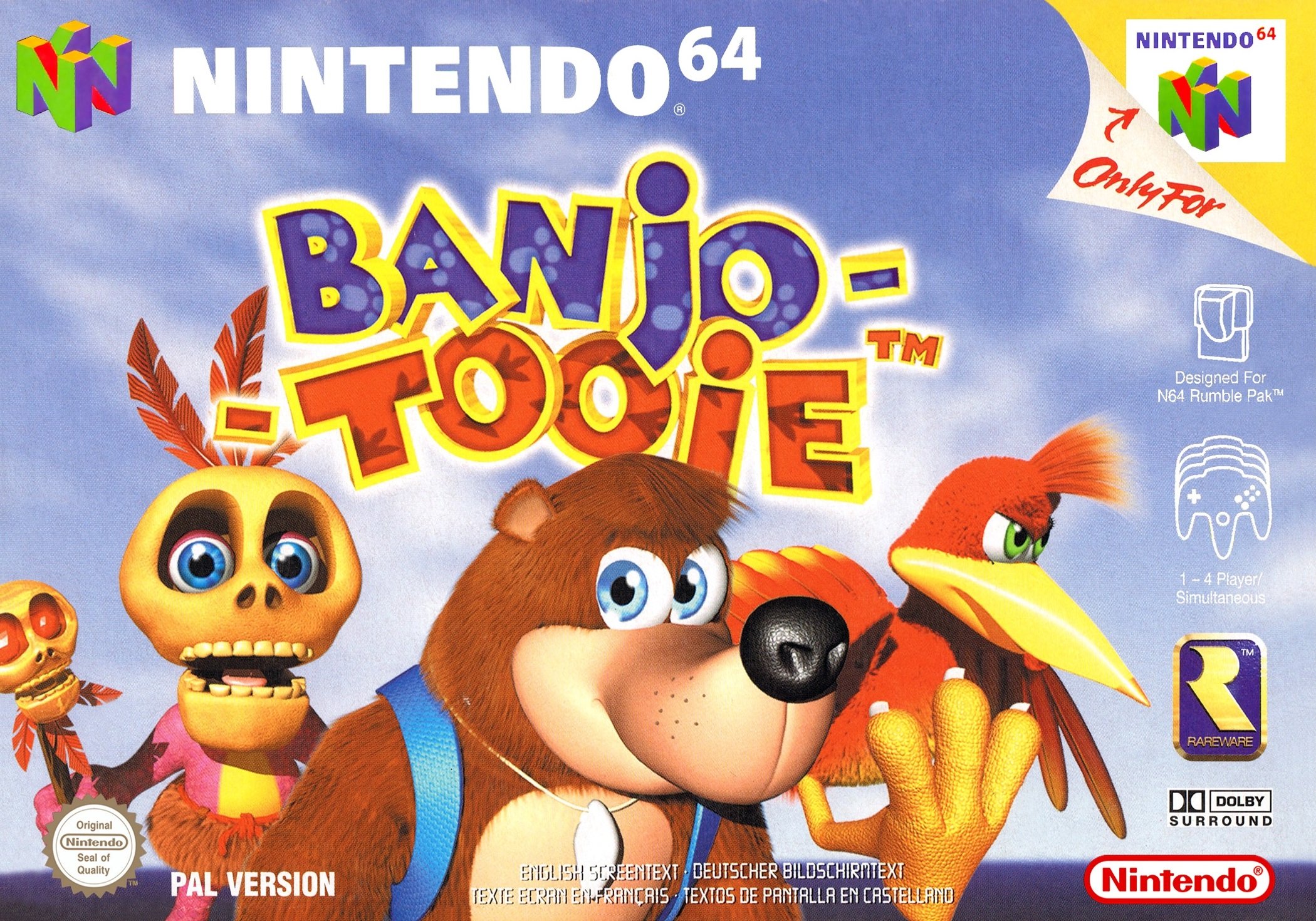
BANJO-TOOIE
Banjo-Tooie, released for the Nintendo 64 in 2000, is not just a sequel to the beloved Banjo-Kazooie; it is a testament to the evolution of video games as a form of interactive art. Developed by Rare, the game was the product of a creative process that sought to expand and refine the concepts introduced in its predecessor.
The creative force behind Banjo-Tooie was largely the same team that developed Banjo-Kazooie. Led by Gregg Mayles, the development team aimed to build upon the foundation laid by the first game. They sought to create larger and more complex worlds, a richer narrative, and more intricate gameplay mechanics. The inspiration came from the desire to outdo their previous work and push the capabilities of the Nintendo 64 to its limits.
Banjo-Tooie is renowned for its finely-tuned balance of difficulty. The game presented a more challenging experience than its predecessor, offering intricate puzzles, more complex bosses, and a wider variety of gameplay mechanics. This increase in difficulty did not detract from the game's accessibility but rather added depth to its gameplay, making it a rewarding experience for both novice players and seasoned gamers.
The graphics and visuals of Banjo-Tooie were a significant leap forward from Banjo-Kazooie. The game featured more detailed textures, larger and more dynamic environments, and improved character animations. This visual enhancement was not merely cosmetic; it played a crucial role in creating an immersive and engaging world for players to explore.
Grant Kirkhope returned to compose the soundtrack for Banjo-Tooie, delivering a score that was both familiar and fresh. The music in Banjo-Tooie maintained the whimsical and playful themes of the original while introducing new compositions that matched the varied and expansive new worlds. The sound design was also meticulously crafted, with each environment and character having distinct auditory signatures that enhanced the overall experience.
In terms of design, Banjo-Tooie was ambitious. It featured interconnected worlds that were much larger than those in Banjo-Kazooie, and the game introduced new abilities and transformations for the characters. The design philosophy encouraged exploration and experimentation, rewarding players for their curiosity and ingenuity.
Culturally, Banjo-Tooie had a significant impact on the gaming community. It demonstrated that sequels could not only match but exceed their predecessors in terms of quality and innovation. The game's humor, charm, and inventive gameplay continued to endear it to fans, solidifying the Banjo series as a staple in the platforming genre.
Did you know? Banjo-Tooie introduced a unique feature called 'Stop 'N' Swop,' which was intended to link the game with Banjo-Kazooie through the use of the Nintendo 64's memory. This feature was innovative for its time but was never fully realized due to technical limitations of the console.
Banjo-Tooie stands as a landmark title in the N64's library, a shining example of how video games can blend art, technology, and storytelling to create an immersive and memorable experience. Its legacy continues to influence the design and development of platform games, maintaining its status as a beloved classic in the world of gaming.

